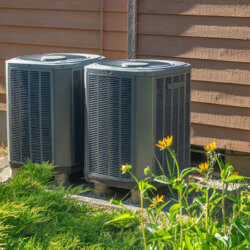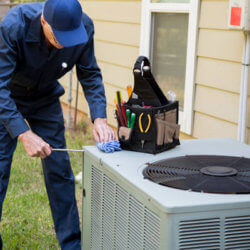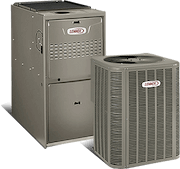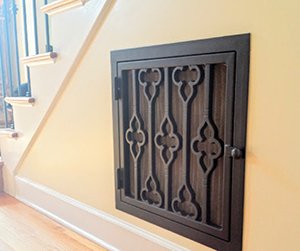
Your HVAC system is essential to your home, but it is not something that has to stick out! That is why most people prefer to hide the HVAC elements in their home. Moving the HVAC system and its components out of sight may downgrade their efficiency and your home comfort if you are not careful, but you can often disguise or hide HVAC components creatively in your home’s interior design without too much efficiency loss.
When HVAC components are installed in plain view, it may pose a challenge for interior decoration. Fortunately, there are several ways you can decorate or hide HVAC pieces stylishly making them less of an eyesore! Some of these ideas are great for DIYers, but you can always contact creative professionals to help you with the look you want to hide HVAC elements.
At Galmiche & Sons, we have been serving the St. Louis area for many years, which has given us plenty of time to become accustomed to using interior design ideas to hide HVAC elements. Whether you need HVAC installation or repair or would like help hiding your HVAC, contact us for all your heating & air conditioning needs in St. Louis.
How to Hide HVAC Elements with Designs
Here are some ideas to conceal your HVAC equipment with your home’s interior design.
1. Camouflage HVAC Components with Design
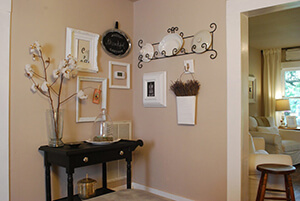
This idea may not really hide the HVAC unit or components, but it creates a distraction so that the unit or component is not noticed on the wall. Try these ideas:
- Place a decal on your mini-split unit to improve interior design and make the appliance less obvious.
- Strategically hang an assortment of framed artwork or photos on the wall surrounding your thermostat to make it less visually conspicuous. You can even enclose the thermostat in an ornate frame like an object of art.
- A good paint job or wallpaper can make your HVAC equipment invisible at first glance by selecting a color or wallpaper that blends with the equipment’s color.
2. Decorate Air Vents
No matter how you choose to hide HVAC elements in your home, never block the air flow around the equipment, especially at vents. Blocking the air flow may cause overheating and reduce its efficiency. You can hide vents with these options:
- Standard sizes of vent covers are commercially available in different styles and they help improve the overall aesthetic.
- Stained and finished wooden vents can replace metal floor vents to match natural hardwood floor.
- To disguise vents, framed ornamental grillwork may be hung in front of the vents, but they must permit full air circulation for both efficiency and to avoid overheating.
3. Strategically Position Inside Furniture
You can also position and construct custom furnishings to help hide HVAC equipment and incorporate it into the design of your home. However, as with all tips, make sure that furniture does not block air flow or otherwise compromise system efficiency.
- You can hide HVAC units inside built-in furniture like a bookcase or an entertainment unit. Just make sure you give enough space between the HVAC component and the design you choose to allow full air flow. Hinged doors will also give access to control.
- A standing wall cabinet with shelves above and below the unit can be constructed around a mini-split air conditioner, which will help blend the unit with the room decoration.
Contact Galmiche & Sons for More Ideas to Hide HVAC Elements
For more information about using creative design ideas to hide HVAC elements, system maintenance, and modern thermostat options, and more, contact the experts at Galmiche & Sons. We have provided reliable heating & air conditioning services to St. Louis, since 1950, and we help and educate our customers about energy and home comfort issues. For all of your HVAC needs in the greater St. Louis area, call us today at 314-993-1110.




